Adipocytes in Skin Health and Disease
March 2014
in “Cold Spring Harbor Perspectives in Medicine”
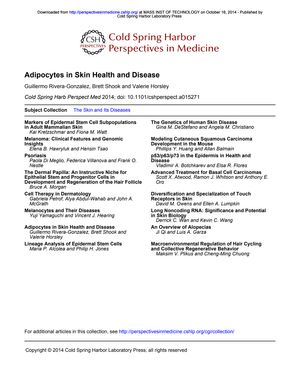
TLDR Fat cells are important for healthy skin, hair growth, and healing, and changes in these cells can affect skin conditions and aging.
The document from March 1, 2014, examines the role of adipocytes in skin health and their involvement in hair follicle growth, wound healing, and skin diseases. It explains that adipocytes in the dermal layer change in size during the hair cycle and communicate with hair follicles. The formation of dermal adipocytes is postnatal and linked to hair follicle formation, with their development being controlled by the maturation of precursor cells that proliferate in sync with the hair cycle. The inhibition of the adipogenic transcription factor PPARY can block adipocyte growth during the hair cycle and wound healing. The review also discusses the impact of hormonal changes on skin homeostasis and the potential decline in adipogenesis contributing to age-related hair loss. Furthermore, it highlights the need for future research on the role of adipocyte precursor cells in skin aging and wound healing, as well as the influence of sex hormones on dermal adipocytes. The document also emphasizes the importance of fatty acids and adipokines from adipocytes for skin function and suggests that lipid metabolism and adipocyte-secreted molecules could be key in understanding skin-related disorders in obesity.
View this study on perspectivesinmedicine.cshlp.org →
Cited in this study
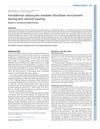
research Intradermal adipocytes mediate fibroblast recruitment during skin wound healing
Fat cells help recruit healing cells and build skin structure during wound healing.
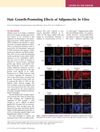
research Hair Growth–Promoting Effects of Adiponectin In Vitro
Adiponectin may stimulate hair growth and could be a potential treatment for promoting hair growth.
research Age-associated inflammation inhibits epidermal stem cell function
Aging causes skin stem cells to work less effectively.

research Live imaging of stem cell and progeny behaviour in physiological hair-follicle regeneration
Hair regeneration needs dynamic cell behavior and mesenchyme presence for stem cell activation.

research Estrogen Leads to Reversible Hair Cycle Retardation through Inducing Premature Catagen and Maintaining Telogen
Estrogen can temporarily slow down hair growth but this can be reversed.

research Reprogramming adult dermis to a neonatal state through epidermal activation of β-catenin
Activating a protein called β-catenin in adult skin can make it behave like young skin, potentially helping with skin aging and hair loss.

research Obesity and the skin
Obesity is linked to various skin problems and may increase the risk of skin cancer.

research Adipocyte Lineage Cells Contribute to the Skin Stem Cell Niche to Drive Hair Cycling
Fat-related cells are important for initiating hair growth.
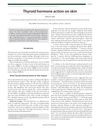
research Thyroid hormone action on skin.
Thyroid hormones affect skin texture, hair and nail growth, and can cause skin diseases related to thyroid problems.

research Body composition changes and inhibition of fat development in vivo implicates androgen in regulation of stem cell lineage allocation
Androgen is important in controlling stem cell differentiation, reducing fat development, and increasing lean mass.

research β-catenin Activity in the Dermal Papilla Regulates Morphogenesis and Regeneration of Hair
β-catenin in the dermal papilla is crucial for normal hair growth and repair.
research Clock genes, hair growth and aging
Circadian clock genes are important for hair growth and may affect aging-related hair loss and graying.

research Atypical Progeroid Syndrome due to Heterozygous Missense LMNA Mutations
The research found that Atypical Progeroid Syndrome has unique symptoms and is not caused by the buildup of a certain mutant protein.

research Skin signs in anorexia nervosa
Anorexia nervosa can cause skin problems, which may help with early diagnosis and usually improve with treatment.
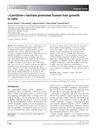
research L ‐Carnitine–L ‐tartrate promotes human hair growth in vitro
L-Carnitine-L-tartrate may help hair grow and prevent hair loss.
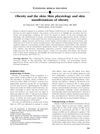
research Obesity and the skin: Skin physiology and skin manifestations of obesity
Obesity affects skin health, causing conditions like acanthosis nigricans and may require different treatment approaches.
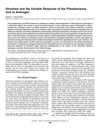
research Hirsutism and the Variable Response of the Pilosebaceous Unit to Androgen
Different women's hair and skin glands respond to hormones in varied ways, which can cause unwanted hair growth even with normal hormone levels, and more research is needed to treat this effectively.
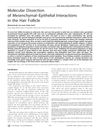
research Molecular Dissection of Mesenchymal–Epithelial Interactions in the Hair Follicle
Understanding gene expression in hair follicles can reveal insights into hair growth and disorders.

research Aging of hair
Hair ages due to genetics and environmental factors, leading to graying and thinning, with treatments available for some conditions.
research 17β-Estradiol and ICI-182780 regulate the hair follicle cycle in mice through an estrogen receptor-α pathway
Estradiol stops hair growth in mice, but an antagonist can reverse this effect.
Related

research Adipocytes in Skin Health and Disease
Fat cells are important for healthy skin, hair growth, and healing, and changes in these cells can affect skin conditions and aging.